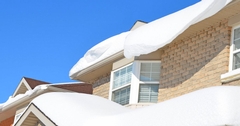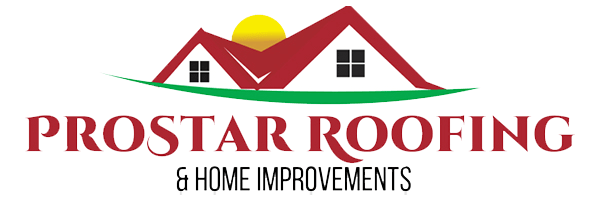
As winter descends, the enchanting beauty of snow-laden landscapes also signals challenges for homeowners, particularly for the roof. The winter season introduces a range of potential threats, including heavy snowfall, ice accumulation, and fluctuating temperatures. These elements pose unique challenges to a roof's integrity, making it crucial for homeowners to adopt effective winter roof care strategies. Let's explore these challenges and discuss essential practices to ensure your roof remains resilient throughout the winter months.
Winter brings about specific challenges for roofs, such as the weight of accumulating snow. The excessive load can exert significant pressure, potentially leading to structural damage and even collapse under extreme circumstances. Ice dams, another common issue during winter, can obstruct water drainage, causing water to infiltrate the roof structure. The freeze and thaw cycle, a result of temperature fluctuations, can cause materials like shingles to expand and contract, leading to wear and tear over time. Additionally, condensation in the attic, resulting from the contrast between cold outside temperatures and warm indoor air, can contribute to mold growth and compromise insulation.
To effectively address these challenges, homeowners should begin with regular roof inspections. While visual inspections from the ground are valuable, scheduling professional inspections at least once a year, preferably before winter, is essential. Identifying potential issues early allows for timely intervention, preventing minor problems from escalating into major damage. During the winter months, safely removing accumulated snow is crucial to prevent overloading and potential collapse. This can be achieved using a roof rake from the ground, eliminating the need to climb onto the roof. For substantial snow accumulation or for those uncomfortable performing the task themselves, hiring professionals is a safer alternative.
Ice dams, a common issue in winter, can be prevented by ensuring proper attic insulation and ventilation. Maintaining a consistent temperature in the attic helps minimize the risk of ice dam formation. Regularly cleaning gutters and downspouts is another vital practice. Clogged gutters can contribute to ice dam formation and hinder proper water drainage, leading to potential leaks and water damage. Installing gutter guards can also be considered to prevent debris from accumulating and impeding water flow.
Sealing leaks and gaps in the roof is crucial for preventing drafts, reducing heat loss, and minimizing the risk of ice dam formation. Regular inspections of the attic for visible gaps, cracks, or areas of poor insulation are recommended. Attending to condensation in the attic is equally important. Proper attic ventilation is necessary to regulate temperature and humidity levels, and using insulation with a vapor barrier can prevent warm air from reaching cold surfaces.
Trimming overhanging branches is a preventive measure to avoid potential damage during winter storms. Overhanging branches can pose a risk of breaking and falling, potentially causing damage to the roof. Ensuring your roof is adequately insulated is another proactive step. Proper insulation helps regulate temperatures, reducing the risk of ice dams and minimizing heat loss. Promptly repairing damaged or missing shingles is vital to maintaining the roof's protective barrier. Damaged shingles can compromise the roof's integrity, allowing water infiltration and causing further damage.
Installing snow guards strategically on the roof helps control the release of snow and ice. This prevents sudden and potentially dangerous falls of snow, offering a more controlled release. In addition to DIY inspections, scheduling a professional roof inspection before winter is a wise decision. While homeowners can identify visible issues, professional inspections provide a thorough assessment, uncovering potential problems that might go unnoticed.
In conclusion, winter roof care is a proactive endeavor that requires homeowners to be attentive and diligent. By adopting these practices, homeowners can navigate the challenges posed by snow, ice, and cool temperatures, ensuring their roof remains resilient throughout the winter months. A well-maintained roof not only protects the home from potential damage but also contributes to its longevity and overall structural integrity.
